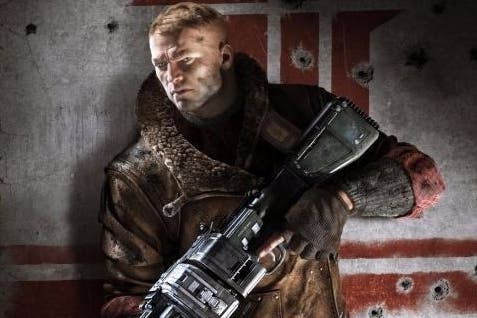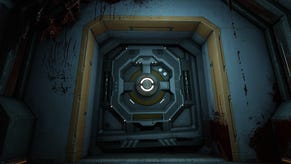How Wolfenstein 2 scales up the console power ladder
Initial PS4, Pro and Xbox One analysis from Digital Foundry.
Developed by Machine Games, Wolfenstein 2 The New Colossus is a true, generational leap in visual design over the franchise reboot in 2014. From the first frame of action, the standards are clearly kept high - in large part owed to the technologies included in its id Tech 6 engine. The physically-based materials, the dynamic lights, shadowing and GPU-accelerated particles all deliver a clear upgrade over what we've seen in the engine's previous incarnation. Visually, the developers have handed in a masterclass on par with the recent Doom reboot, though it's fascinating to see what another Bethesda studio is capable of producing with the same toolset.
It's the upgrade over The New Order that stands out most however - which was based very much on the virtual texturing delights of the id Tech 5 engine that powered Rage. Fundamentally, the upgrade in technology marks a shift from the pre-baked lighting and shadows of the original to a beautiful, fully dynamic lighting model. On top of that is the use of a massively expanded post-process pipeline. Visual tricks like bokeh DOF, object and camera motion blur, HDR bloom, film grain and temporal anti-aliasing all make a return from Doom 2016. All of these elements combine to effectively create an almost filmic quality to each frame.
Despite its id Tech 6 underpinnings, Wolfenstein 2: The New Colossus takes it in its own unique visual direction. There's a beautiful use of depth of field in particular, and those GPU-accelerated particles work well to lend the game's futuristic weaponry a sense of heft. From the automatic machineguns, to the 'Laserkraftwerk' laser cannon, each spews out a burst of particle effects with properties for radiosity - impressing a great sense of impact on the world. Tying in to Wolfenstein's dystopic setting, the volumetric lighting streaking across each metallic corridor works well for building atmosphere - something Doom's 2016 reboot in 2016 pushed quite heavily as well. All combined, it creates a bright, but often dense and claustrophobic air to each of Wolfenstein 2's levels.
With its heavy use of temporal anti-aliasing (the same 8x TSSA returns from Doom), it's interesting to stack up each of the available console platforms in terms of image quality. Essentially, the higher up the console power strata you ascend, the the higher the resolution, the more refined the image, with less softness and blur overall. At the bottom of the pile sits Xbox One, handing in a 1440x810 presentation, while the base PlayStation 4 fares better, delivering full 1920x1080. Curiously, Machine Games doesn't seem to have enabled Doom's dynamic resolution scaling - based on testing so far at least - which is curious bearing in mind that an adaptive resolution option is available in the PC game.
With Wolfenstein 2 confirmed for enhanced Xbox One X features, it's fair to say that there's a closer focus than usual on PlayStation 4 Pro. Unlike prior Bethesda releases like Prey and The Evil Within 2, there is Pro support out of the box - specifically a resolution bump to 2560x1440. The bottom line: a 2.3x increase to GPU compute over base hardware adds an extra 77 per cent of resolution, the Pro's lack of a significant boost in memory bandwidth possibly limits the extent of the upgrade. As it goes then, Machine Games' latest joins the swelling ranks of 1440p Pro titles, and it'll be fascinating to see how Xbox One X improves beyond this result.
Besides that upgrade in resolution, Pro users also enjoy improved texture filtering on select surfaces, but beyond that, enhancements are sadly on the meagre side. You get improved detail levels on a 4K screen, but the same core assets, effects and quality settings are in place, making it a resolution/filtering upgrade only. Those advantages only apply during gameplay too; major cut-scenes aren't usually rendered in-engine. Instead, Machine Games relies on pre-rendered movie files to tell the major beats of the story. These are high quality pre-rendered video assets running at 1080p and 30 frames per second, and are identical whether they're played back on PS4, Pro or Xbox One.
In terms of performance, we're looking at three consoles and two distinct performance profiles. Machine Games' scaling from 1080p to 1440p across the two PlayStation consoles is effective - frame-rates between the two PS4s are essentially identical. The early wheelchair-bound sections of the game run at a smooth 60fps, as you'd hope from a game built on id Tech, with only a few one-off dropped frames. For the first 30 minutes the game runs faultlessly at this number, but once we get to our feet, the fact is just looking at a complex area brings both consoles down to the mid-50fps point. With lots of enemies on screen and those GPU-accelerated particles in play, the line starts to dip, even on PS4 Pro.
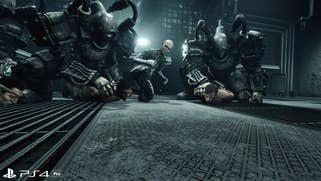
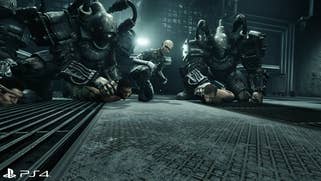
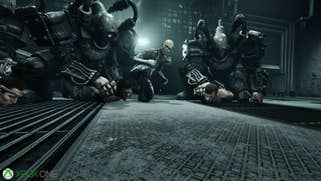







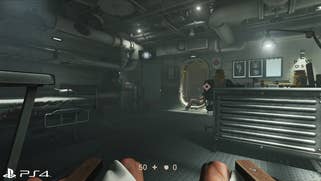
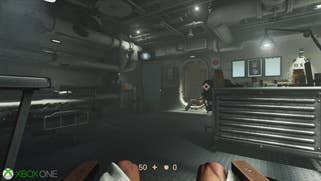

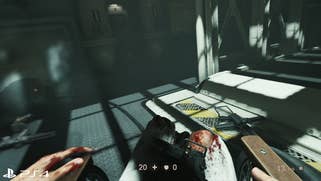

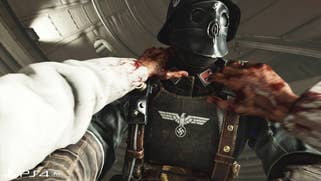
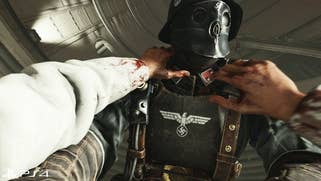

Wolfenstein's inability to lock to its target frame-rate is a little disappointing. The motion blur effect helps to hide any drops, and gameplay is still perceptually very smooth - though the eye does pick up the occasional dropped frame. Factoring in Xbox One, you'd hope that the resolution drop to 810p would offer the same performance level as the PlayStation consoles, but the fact is that performance is worse on Xbox One, and by a noticeable degree. The game wavers from 50 to 60fps more aggressively, and Microsoft's machine does touch the lower bounds of that more often than either PlayStation console.
Again it's surprising that this isn't triggered by scenerios like intense shoot-outs - as was the case in Doom 2016. Similar to the PlayStation 4 versions, one blasting sequence ended with us walking around the same room with similar drops to the 50fps line. All of which highlights this isn't an exceptional issue where the developers have really pushed the engine to its limits - it's the baseline performance of rendering this scene, encompassing the lighting and shadow quality across the room.
Before Xbox One X lands, the best way to play on console for now is on PS4 or PS4 Pro. And besides the shift upwards to 1440p on Pro, there's really not much to divide the two in any other aspect. They both look gorgeous, and while performance isn't perfectly ironed out at 60fps, it's still enough to give a good experience most of the way. But let's not overlook the announced Switch version as well; given the limits of Nintendo's hardware compared to these more powerful, dedicated consoles, it'll be intriguing to see how such a tech showcase can run at all, especially in portable mode.
